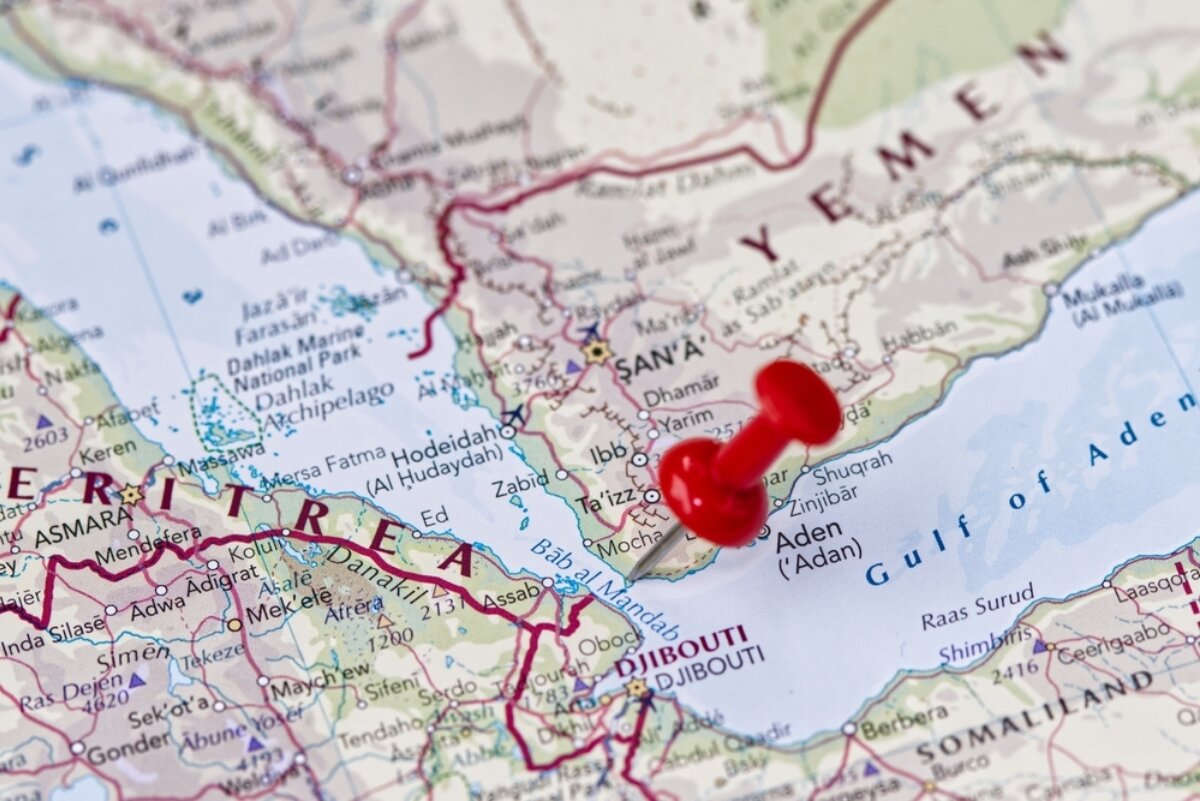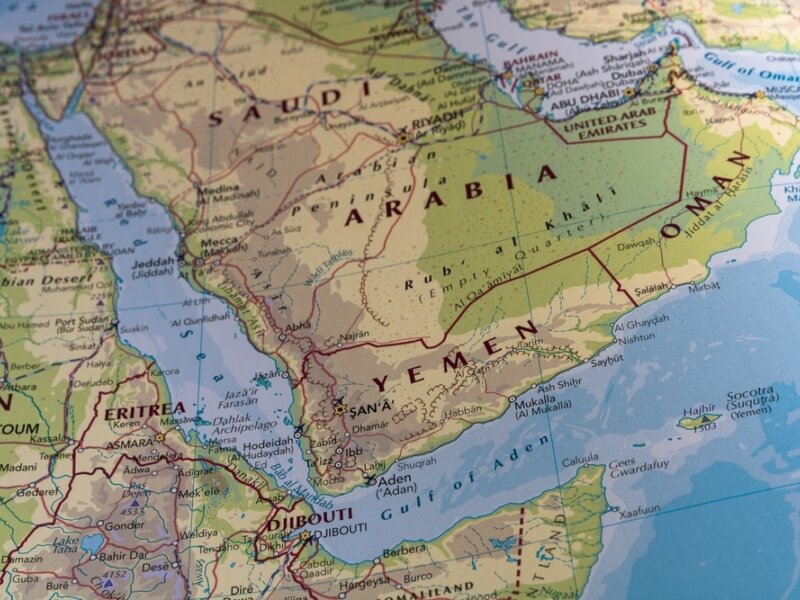From local guerrilla to global disruption: the rise and evolution of the Houthis in Yemen
An analysis of the Shia political and military organisation. By Eleonora Ardemagni

Below the Sky / Shutterstock.com
Since late 2023, Yemen’s Houthis have begun to attack international shipping in the Southern Red Sea, the Bab el-Mandeb Strait and then also in the Gulf of Aden, in “solidarity with Palestinians in Gaza”. This has quickly raised the armed movement’s visibility in global media. In Western countries, this phenomenon prompted a debate mainly focused on Iran’s political and military influence on the Yemeni armed movement, also due to limited knowledge about it.
Nevertheless, such a simplistic approach completely misses the Houthis’ genealogy, evolution and agenda, and the context of the 2015 civil war in Yemen. The Houthis receive smuggled weapons, training, military and intelligence advice, funding and media support from the al-Qods forces of Iran’s Islamic Revolutionary Guard Corps (IRGC, also known as pasdaran). They can be considered as the most external player of the pro-Tehran “Axis of Resistance” of non-state armed actors against the US and Israel.
While the Yemeni armed movement is an ally of Iran, with which it shares a similar political ideology and worldview, it is not, however, a proxy creation of the pasdaran. The Houthis’ militant history predates the alliance with Tehran, their decision-making mechanism is mainly family and locally based, and they primarily pursue their own agenda. Therefore, understanding this armed group’s identity, goals and evolution is decisive not only to put it in context, but also to identify policy options for crisis mitigation and, possibly, conflict resolution. To do so, the focus must be kept first of all on Yemen, and only at a later stage on Iran.
The Houthis
The Houthis, who since 2011 have been calling themselves Ansar Allah, “partisans of God”, are ethnically Arabs belonging to the Zaydi Shia confession of Islam, which is professed by 30-40 percent of the whole Yemeni population. Nevertheless, not all Yemen’s Zaydis support the Houthis. Zaydist doctrine differs from Twelverism/Jaafarism, the dominant Shia branch in Iran, and it’s not so distant from Shafeism, Yemen’s Sunni school of jurisprudence (madhhab). Between 897 and 1962, the North of Yemen was an imamate, under the rule of a Zaydi imam, who held both religious and temporal power, in accordance with the Zaydi doctrine. For this reason, Zaydi clerics have been widely marginalised after the 1962 revolution, which transformed the North of Yemen in a republic (the Yemen Arab Republic).
The Houthi (“huthi” in Arabic) are named after the movement’s founder Husayn Al Houthi, who started to preach in the ‘80s in the mountainous Saada region, the upper north governorate bordering Saudi Arabia, which is still the group’s stronghold. The Al Houthi family belongs to the religious elite of the Zaydis (sayyid; sāda) and claims direct descent from the prophet Muhammad’s lineage (they are hashemites). This places them at the top of the social hierarchy in Yemen, unlike most Yemenis, who are of tribal lineage instead. The Houthi movement’s decision-making power has been concentrated in the inner circle of the Saada-based group, plus few local dignitaries and military commanders. The first leader was the group’s founder, Husayn, who was killed in 2004 by the Yemeni army. He was followed by his half-brother Abdelmalek, the current leader. Their father Badreddin was the main ideologue of the movement, while his cousin Mohammed Ali was the chief of the Supreme Revolutionary Committee formed in Sanaa after the 2015 coup and is now a member of the Supreme Political Council, the de facto ruling body of the North-Western territories.
Husayn, who studied Islam in Iran and Sudan between the ‘80s and early ‘90s, was in contact with the religious seminaries (hawza; hawzat) of the Shia holy cities of Qom (Iran) and Najaf (Iraq). The movement had three main goals: reviving Zaydism in Yemen; fighting government and Saudi anti-Zaydi support for Salafi schools (madrasat) and tribal militias in the upper north; and ending the marginalisation of the north from political representation and benefits from oil revenues.
The four phases of the movement’s evolution: resistance, rebellion, revolution and disruption
After Husayn Al Houthi’s political experiences with Zaydi Shia political parties (Hizb al-Haqq) and formations (The Believing Youth), the Houthi movement started to take shape in the early 2000s, when the well-known slogan (sarkha, the scream), “God is Great, Death to America, Death to Israel, Curse upon the Jews, Victory to Islam”, was shouted for the first time by Al Houthi’s supporters against the Yemeni president Ali Abdullah Saleh in Sanaa.
The political trajectory of the Houthi movement can be divided into four phases: resistance, rebellion, revolution and disruption. Resistance and rebellion refer to the formation and rise of the group as a local movement. In the early 2000s, Husayn Al Houthi condemned Saleh’s security-oriented alliance with the US to fight al-Qaeda in the Arabian Peninsula in the context of the war on terror. Anti-government demonstrations spread in Saada. Six rounds of battles (the “Saada wars”) were fought between the Houthis and the central government between 2004 and 2010. During this time, the group gradually shifted from anti-government resistance to armed insurgency. The wars started as a guerrilla in the Houthis’ stronghold of Saada. Husayn was killed in 2004, but clashes spread to Amran, northern Sanaa province and along the Yemeni-Saudi border. The army wasn’t able to defeat the Houthi insurgency and opted for hybrid warfare: together with the elite units of the Republican Guard, tribal Salafi militias joined the war on the government’s side. In 2009, the Houthis started cross-border incursions into Saudi territory: the Kingdom reacted with airstrikes on Saada. The Saada wars ended in 2010 with a Qatar-brokered ceasefire: neither the Yemeni army nor the Saudis managed to defeat the Houthi insurgency, and the armed movement was able to self-govern Saada governorate. It is in the Saada wars that the seeds of the current Yemen war can be found.
Between 2011 and 2015, the Houthi movement shifted from rebellion to revolution, thus gradually acquiring regional standing. In 2011, they joined the popular uprising in Sanaa against Saleh’s government, in the context of the “Arab Springs”. Following Saleh’s resignation and the formation of a power-sharing transition government in 2012, the Houthis skilfully played at three different tables simultaneously. On the institutional level, a Houthi delegation had a seat at the National Dialogue Conference in 2013-14 to rewrite the constitution; on the political-tribal level, they forged an informal alliance with the power bloc of former president Saleh, thus gaining the support of the majority of tribes in Northern regions and Sanaa’s outskirts; and on the military level, they advanced from Saada to Amran and then set up camps in the capital Sanaa, with limited or no resistance by local tribes and the army, whose soldiers were still mostly supporting Saleh. After the short-lived experiment of a national unity government, in January 2015, the Houthis staged a coup, by seizing the presidential palace in Sanaa, putting the interim president under house arrests, forming a revolutionary committee, and releasing a constitutional declaration. As a consequence, in March 2015, Saudi Arabia organised an Arab military coalition to restore the internationally recognised government of Abd-Rabbu Mansour Hadi, with the United Arab Emirates playing a leading role in ground operations.
The Houthis’ coup was possible thanks to the support of former president Saleh’s power bloc: this alliance of convenience against the institutional transition allowed the Houthis to rely upon the military arsenal of the regular army. From that moment on, the Houthis developed new and improved military capabilities. Iran’s military support – which started to be systematic since the 2015 Saudi intervention – proved to be decisive for the Houthis both in terms of weapons provision and training. This combination of factors enabled the transformation of the Houthis from local player into regional actor. The upgrading of missile and drone capabilities was a turning-point, with the launch of the first medium-range ballistic missile against Saudi Arabia in 2019. Between 2016 and 2022, the Houthis carried out repeated strikes on Saudi territory and, to a lesser extent, on the United Arab Emirates, also attacking coastal and maritime targets in the Red Sea. Despite a clear military asymmetry with the Arab coalition, the Houthis succeeded in consolidating their de facto state in the north-west of the country, combining repression and predation. While they don’t control oil or gas fields, they profit from custom duties, land and property confiscations, taxes and the smuggling economy (fuel). However, they are often unable to pay public servants’ salaries or to provide welfare. In this context, the UN-brokered national truce, agreed in 2022 and still informally in place, has widely diminished violence in the country and stopped Houthi attacks against Gulf neighbours. Most of all, the opening of direct talks between Saudi Arabia and the Houthis in 2022 has contributed to a decrease in border tensions, even though a bilateral ceasefire hasn’t been signed yet.
Since late 2023, the Houthis’ attacks against international maritime trade in the Southern Red Sea, the Bab el-Mandeb Strait and the Gulf of Aden have opened a new phase. The disruption of shipping routes “in solidarity with Gaza” allows the Houthis to step up their regional standing and international visibility, leveraging on the traditional anti-imperialist discourse against Israel and the US. This – also with the support of their media propaganda machinery – speaks to an Arab and Islamic audience that goes beyond Iran’s armed constellation. In some way, the Houthis have materially and immaterially exploited the Axis of Resistance, growing as an armed movement thanks to Tehran’s (and Hezbollah’s) weapons and training, and leveraging the narratives, slogans and symbols of the Iran-led Axis. However, the Houthis have maintained their decision-making autonomy, due to their strong local history, leadership and agenda.
Yemen’s recent political trend has been marked by flexible alliances, driven by political convenience rather than by sectarian belonging. The Houthis fought Saleh and then converged with him against the recognised institutions (killing him eventually in late 2017). In the same way, the nine-year war with Saudi Arabia hasn’t discouraged the Houthis from accepting direct talks with Riyadh in order to be recognised as interlocutors, to sideline the Yemeni government and gain concessions for territories under their current control. It is clear that it is not possible to understand the rise and evolution of the Houthi movement without delving into Yemen’s balances, which are also crucial to put in context the security threats and balances in the Red Sea region.



